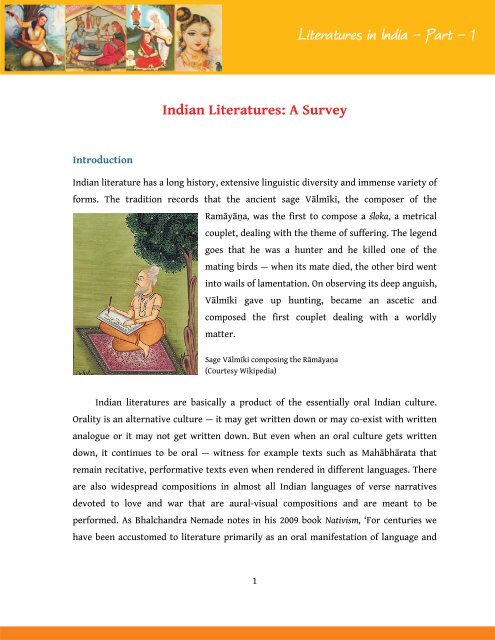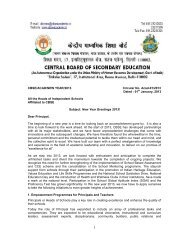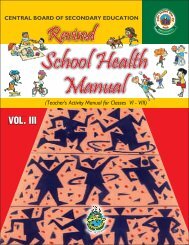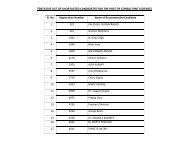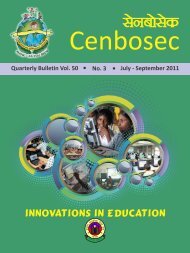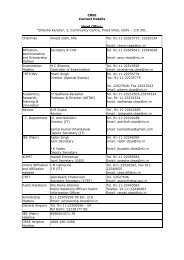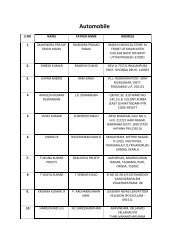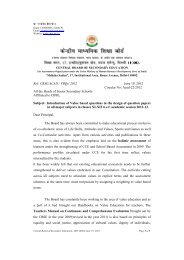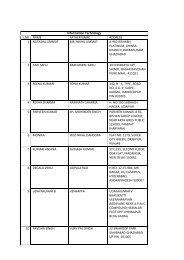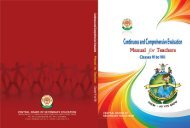Module 3 - CBSE
Module 3 - CBSE
Module 3 - CBSE
You also want an ePaper? Increase the reach of your titles
YUMPU automatically turns print PDFs into web optimized ePapers that Google loves.
Indian Literatures: A Survey<br />
Introduction<br />
Indian literature has a long history, extensive linguistic diversity and immense variety of<br />
forms. The tradition records that the ancient sage Vālmīki, the composer of the<br />
Ramāyāṇa, was the first to compose a śloka, a metrical<br />
couplet, dealing with the theme of suffering. The legend<br />
goes that he was a hunter and he killed one of the<br />
mating birds — when its mate died, the other bird went<br />
into wails of lamentation. On observing its deep anguish,<br />
Vālmīki gave up hunting, became an ascetic and<br />
composed the first couplet dealing with a worldly<br />
matter.<br />
Sage Vālmīki composing the Rāmāyaṇa<br />
(Courtesy Wikipedia)<br />
Indian literatures are basically a product of the essentially oral Indian culture.<br />
Orality is an alternative culture — it may get written down or may co-exist with written<br />
analogue or it may not get written down. But even when an oral culture gets written<br />
down, it continues to be oral — witness for example texts such as Mahābhārata that<br />
remain recitative, performative texts even when rendered in different languages. There<br />
are also widespread compositions in almost all Indian languages of verse narratives<br />
devoted to love and war that are aural-visual compositions and are meant to be<br />
performed. As Bhalchandra Nemade notes in his 2009 book Nativism, ‘For centuries we<br />
have been accustomed to literature primarily as an oral manifestation of language and<br />
1


